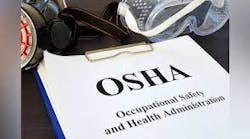Talking the pulse of the leaders at ASSP --President Christine Sullivan, President-Elect Jim Thornton and Senior Vice President Pam Walaski – the organization asked them for their perspective on a number of issues in an article.
Here is what they said about what they would like to see from OSHA to help improve conditions for workers.
Sullivan: OSHA needs to reexamine the way it does standards. While standards are important for many organizations, the standards have no impact on where employee injuries are occurring. OSHA needs to use the data they are collecting from companies and do a better job using predictive analytics to focus their efforts on areas where they can make an impact.
Thornton: I think OSHA should require the recognition of qualified safety and health professionals for future regulations. Safety professionals will ensure requirements are properly followed and will be able to provide different control options for regulatory compliance. As a result, many more workers would have a safety professional looking out for their interests.
In addition, I think OSHA ought to consider more frequent use of the “negotiated rulemaking” method of developing OSH standards. Although the moniker carries a negative connotation, the concept is that the agency has the authority to bring affected stakeholders and technical experts together and develop “reasonable-yet-protective” OSH standards.
Walaski: Addressing emerging and changing hazards requires a process that is nimble, so relying on OSHA to promulgate regulations is unreasonable given that its process is part of the OSH Act and unlikely to be modified. However, the approaches and voluntary consensus standards that OSH professionals rely on are based on a model that includes all stakeholders and is revisited on a prescribed basis to be revised or reaffirmed.
I would like to see OSHA find a way to incorporate the required use of OSH professionals who use these standards into some of their activities. Perhaps local area directors who are negotiating with employers for the reduction of fines could require consultation as part of negotiations. In a way, this would expand the use of the consultation programs already in place.
